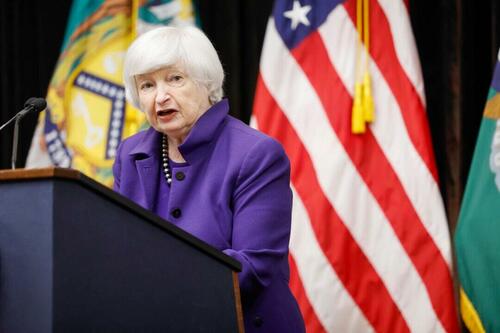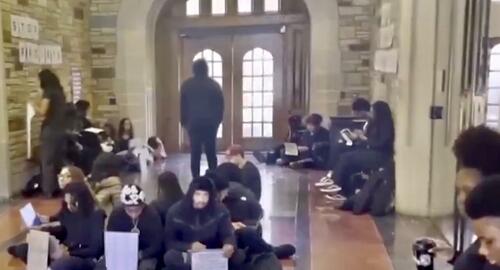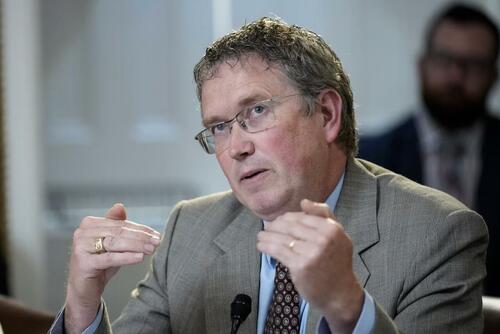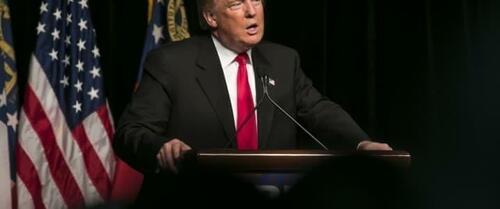Authored by Jonathan Turley,
For those who opposed the censorship and cancel campaigns during the pandemic, Dr. Jay Bhattacharya became an iconic figure of resistance. Unfortunately, the same can be said of the anti-free speech movement and pandemic hawks. Bhattacharya, who co-authored the Great Barrington Declaration and was a vocal critic of COVID-19 policies, has been nominated as the next head of the National Institutes of Health. As I wrote this weekend in my column, the nomination was heralded by many as a turning point for the NIH. It is also a rallying cry for those who supported the earlier measures, as shown by a hit piece in Scientific American, accusing him of being a danger to the very lives of American citizens.
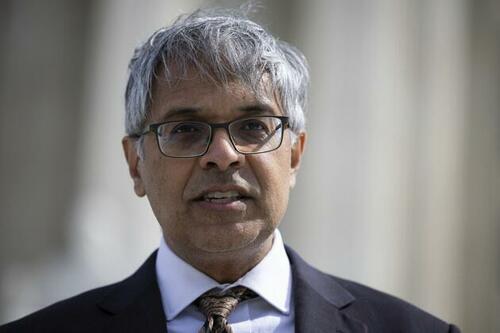
Bhattacharya was censored, blacklisted, and vilified for the last four years due to his opposing views on health policy, including opposing wholesale shutdowns of schools and businesses. He was recently honored with the prestigious “Intellectual Freedom” award from the American Academy of Sciences and Letters.
Before the pandemic, Bhattacharya was one of the most respected scientists in the world and served as the director of Stanford’s Center for Demography and Economics of Health and Aging.
That all changed when he dared to question the science behind pandemic policies, including suggesting that natural immunity would be as good if not better protection for young healthy individuals.
It did not matter that positions once denounced as “conspiracy theories” have been recognized or embraced by many.
Some argued that there was no need to shut down schools, which has led to a crisis in mental illness among the young and the loss of critical years of education. Other nations heeded such advice with more limited shutdowns (including keeping schools open) and did not experience our losses.
Others argued that the virus’s origin was likely the Chinese research lab in Wuhan. That position was denounced by the Washington Post as a “debunked” coronavirus “conspiracy theory.” The New York Times Science and Health reporter Apoorva Mandavilli called any mention of the lab theory “racist.”
Federal agencies now support the lab theory as the most likely based on the scientific evidence.
Likewise, many questioned the efficacy of those blue surgical masks and supported natural immunity to the virus — both positions were later recognized by the government.
Others questioned the six-foot rule, which shut down many businesses, as unsupported by science. In congressional testimony, Dr. Anthony Fauci recently admitted that the rule “sort of just appeared” and “wasn’t based on data.” Yet not only did it result in heavily enforced rules (and meltdowns) in public areas, but the media further ostracized dissenting critics.
Again, Fauci and other scientists did little to stand up for these scientists or call for free speech to be protected. As I discuss in my new book, “The Indispensable Right,” the result is that we never really had a national debate on many of these issues and the result of massive social and economic costs.
Now, those who supported these policies are gathering to oppose Bhattacharya.
It is hardly surprising that one of the first hit pieces came from Scientific American. The magazine not only helped lead the mob response to the pandemic but has also been criticized for abandoning neutrality in recent elections.
Only a few weeks ago, editor-in-chief Laura Helmuth posted a raving, profanity-laden meltdown on social media in which effectively called over 77.3 million Americans who voted for President-elect Donald Trump both “fascists” and bigots.
Now the magazine has published an article by Dr. Steven Albert, a professor and the Hallen Chair of Community Health and Social Justice at the University of Pittsburgh’s School of Public Health.
Two specific attacks stand out in the piece.
The “Personal Pique” of Censorship
First, Dr. Albert suggests that Dr. Bhattacharya was never actually censored. He insists that what Bhattacharya calls censorship was merely the fact that “social media venues … dropped his messaging.” It is curious wording and it is not quite clear what Dr. Albert is trying to say.
When Albert’s article appeared, various other outlets advanced the same claim. For example, MSNBC (which also was a leading outlet in the attacks on skeptics and dissenters during the pandemic) mocked the claim that Bhattacharya was censored.
“The problem is there’s basically zero evidence to support Bhattacharya and his supporters’ claims of censorship. It is true that some internet sites appeared to remove or limit access to the document. But, as with medical professionals not being sure how best to handle Covid, the same was true of social media companies, which struggled with how best to handle the spread of potentially dangerous information that could have resulted in harm to users.
Many companies chose, of their own free will and as they were allowed as private actors, to downplay certain information that they felt might do more harm than good. That is their own First Amendment-protected right as private entities in the United States.”
The article goes on to suggest that there is no proof of censorship without government direction or control.
As the ACLU has long maintained, censorship occurs in both private and governmental forums. The same figures insist that, if there is no violation of the First Amendment (which only applies to the government), there is no free speech violation. The First Amendment was never the exclusive definition of free speech. Free speech is viewed by many of us as a human right; the First Amendment only deals with one source for limiting it. Free speech can be undermined by private corporations as well as government agencies.
There is also ample evidence of government officials pushing social media companies to censor pandemic critics. MSNBC simply excuses the censorship by saying that these companies “struggled with how best to handle the spread of potentially dangerous information that could have resulted in harm to users.” In reality, the censorship itself cost the nation greatly. We never had the type of debate that we need on the efficacy of natural immunities, masks, or other precautions. We never explored the science supporting the six-foot rule. We suffered immense costs in education and the economy rather than allowing scientists on both sides to be heard equally on such forums.
Instead, Bhattacharya became a persona non grata in academia and was subjected to cancel campaigns. In the Los Angeles Times, columnist Michael Hiltzik decried how “we’re living in an upside-down world” because Stanford allowed these scientists to speak at a scientific forum. He was outraged that, while “Bhattacharya’s name doesn’t appear in the event announcement,” he was an event organizer. Hiltzik also wrote a column titled “The COVID lab leak claim isn’t just an attack on science, but a threat to public health.”
Critics of Bhattacharya have also cited the fact that he retained his position, unlike some who were dropped by their institutions or associations. Survival is hardly the test of whether someone was censored or canceled. Bhattacharya holds a position with academic protections, as do some of us fortunate to have tenure in this age of rage. The fact that he persisted and the American people rejected the establishment in this election is not proof that he was not targeted or blocked from academic settings or social media sites.
Dr. Albert dismisses the censorship debate as a “personal pique” and “a distraction” that “should not obscure the central focus of U.S. public health policy during the pandemic.” Obviously, for many of us who value free speech and a diversity of viewpoints, it is a bit more than a “personal pique.”
The “Vanity” of Personal Autonomy
The second point that stood out in the Scientific American article was the warning that Bhattacharya is too focused on individual rights and personal autonomy to be the head of NIH. Dr. Albert declares:
“Pitting personal autonomy against the application of science to policy is fine for vanity webcasts and think tanks, but inappropriate for NIH leadership. If he would rather focus on promoting personal autonomy in pandemic policy, perhaps he is being nominated to the wrong agency.”
It is a chilling observation from a leading public health figure. NIH leadership suggests policies impacting a nation and must balance the costs and benefits of any given course. The NIH states that it is focused not just on “scientific integrity” but “public accountability and social responsibility in the conduct of science.” Isn’t individual rights part of that responsibility?
I would hope that the head of NIH (indeed every NIH official) would place individual rights and personal autonomy as one of the most prominent considerations in setting policies.policy-making Indeed, the NIH routinely discusses and publishes papers on the importance of personal autonomy when discussing subjects like abortion.
These two points are linked on some level. The nation was divided on many COVID policies, and doubts only grew with the censorship and intolerance that was evident during the pandemic. The NIH contributed to that mistrust with its heavy-handed tactics and viewpoint intolerance. One of the victims of that period will now head the NIH. That experience could be invaluable as Dr. Bhattacharya steers his agency toward a more transparent and tolerant path.
* * *
Jonathan Turley is the Shapiro professor of public interest law at George Washington University and the author of “The Indispensable Right: Free Speech in an Age of Rage.”


